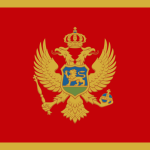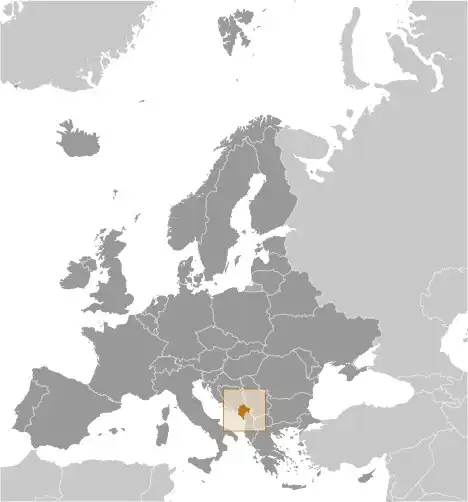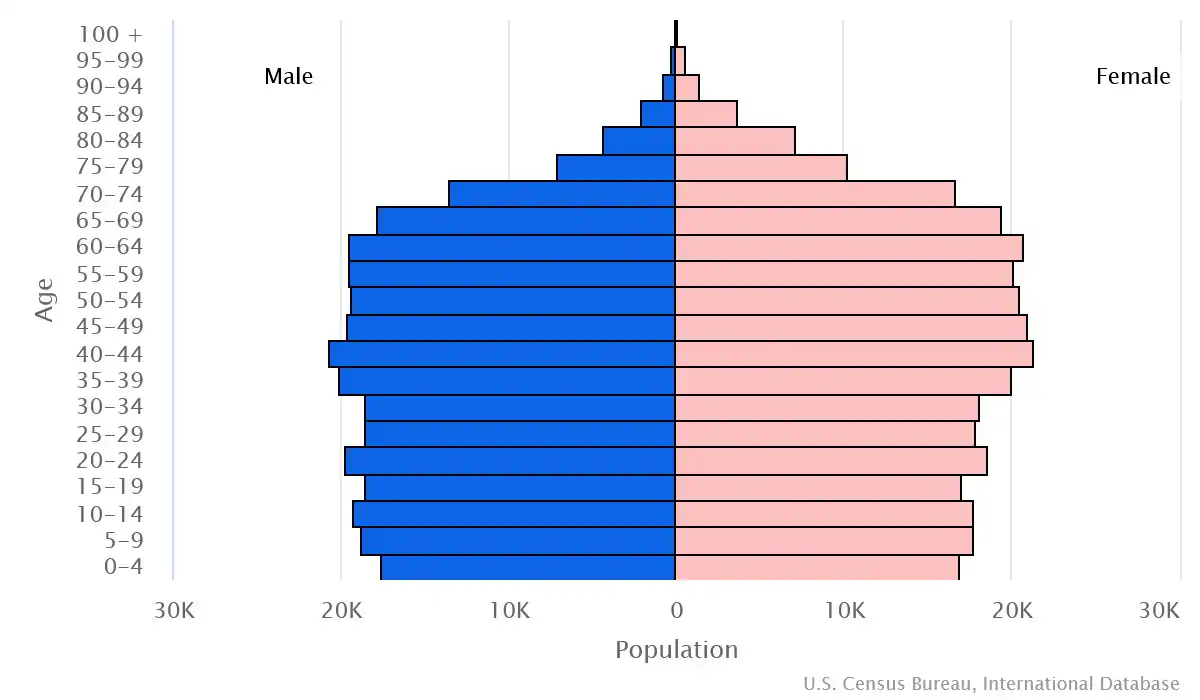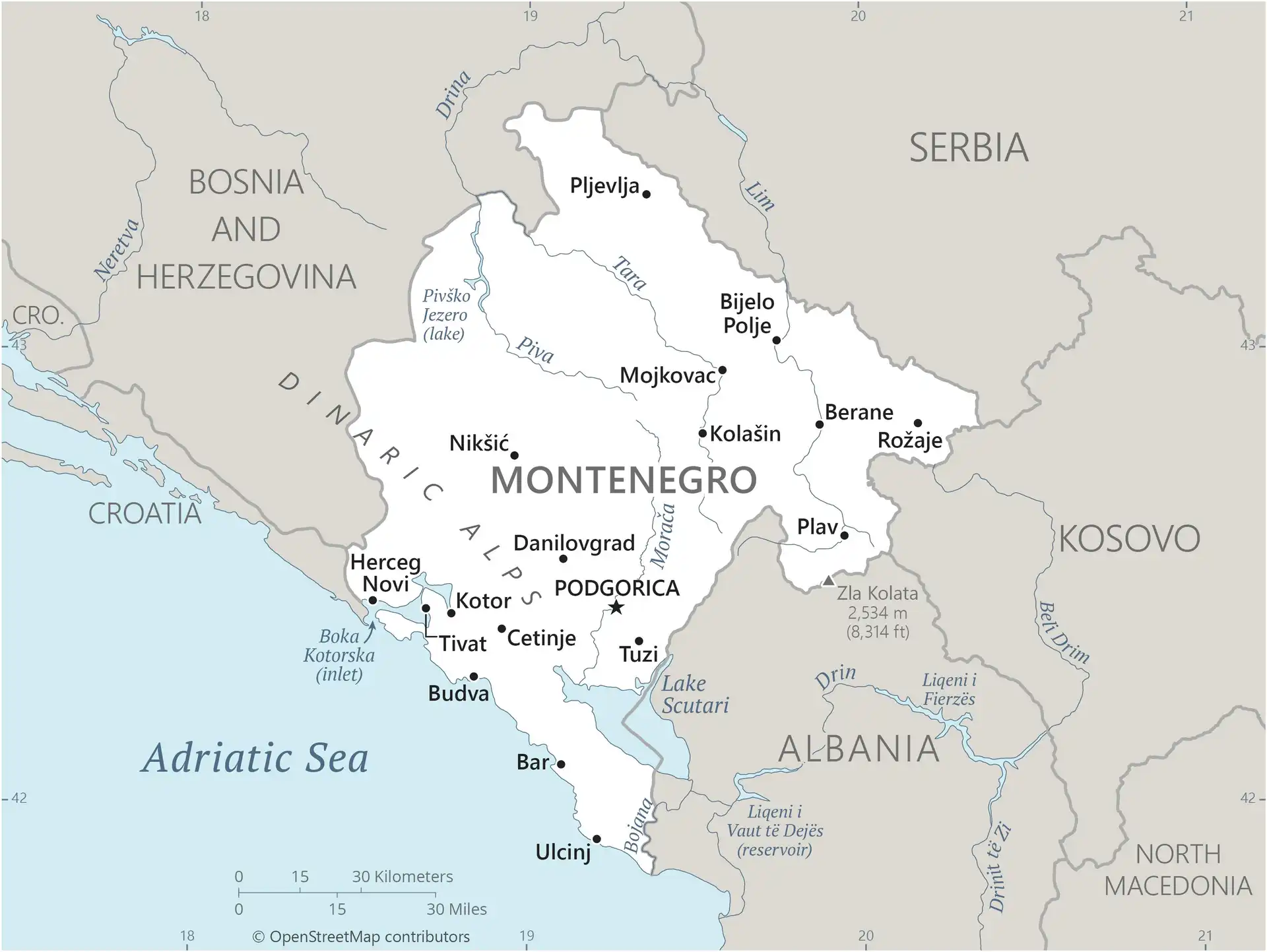
Montenegro
Veröffentlicht: 19. June 2022 - Letztes Update: 28. February 2025
Country Data Dashboard

Population
599,849
Growth: -0.44% (2024 est.)
GDP
$7.531 billion
(2023 est.)
Area
13,812 sq km
| Government type: | parliamentary republic |
| Capital: | Podgorica; note - Cetinje retains the status of "Old Royal Capital" |
| Languages: | Serbian 42.9%, Montenegrin (official) 37%, Bosnian 5.3%, Albanian 5.3%, Serbo-Croat 2%, other 3.5%, unspecified 4% (2011 est.) |
People & Society
Ethnicity (2011 est.)
Religion (2011 est.)
Age structure

Economy
Economic overview
upper middle-income, small Balkan economy; uses euro as de facto currency; strong growth driven by tourism and consumption; new impetus for EU accession under Europe Now government; influx of affluent migrants from Russia and Ukraine; progress in fiscal position subject to risks from pension costs, debt service, and informal sector
Real GDP (purchasing power parity) in Billion $
Real GDP per capita in $
Exports & Imports in billion $
Top 5 Import Partner in 2022 (54%)
Top 5 Import Commodities in 2022
- electricity ⚡
- refined petroleum ⛽
- aluminum 🪙
- cars 🚗
- garments 👕
Top 5 Export Partner in 2022 (54%)
Top 5 Export Commodities in 2022
- copper ore 🟧🪙
- electricity ⚡
- aluminum 🪙
- aluminum ore 🪙
- packaged medicine 💊
Geography
Map

Area
Natural resources
- bauxite 🪨
- hydroelectricity ⚡
Climate
Mediterranean climate, hot dry summers and autumns and relatively cold winters with heavy snowfalls inland
Historical Background Information
The use of the name Crna Gora or Black Mountain (Montenegro) began in the 13th century in reference to a highland region in the Serbian province of Zeta. Under Ottoman control beginning in 1496, Montenegro was a semi-autonomous theocracy ruled by a series of bishop princes until 1852, when it became a secular principality. Montenegro fought a series of wars with the Ottomans and eventually won recognition as an independent sovereign principality at the Congress of Berlin in 1878. In 1918, the country was absorbed by the Kingdom of Serbs, Croats, and Slovenes, which became the Kingdom of Yugoslavia in 1929. At the end of World War II, Montenegro joined the Socialist Federal Republic of Yugoslavia (SFRY). When the SFRY dissolved in 1992, Montenegro and Serbia created the Federal Republic of Yugoslavia (FRY), which shifted in 2003 to a looser State Union of Serbia and Montenegro. Montenegro voted to restore its independence on 3 June 2006. Montenegro became an official EU candidate in 2010 and joined NATO in 2017.
